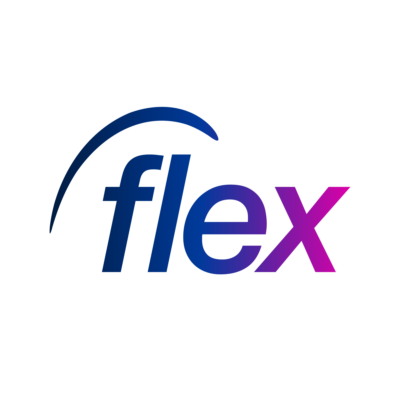
Periods of business growth often bring talent shortages, slowed operations, and inconsistencies in service quality that cannot be solved just by increasing headcount. Strategic workforce management, with scalability taken into account, allows organisations to adapt to market shifts, seasonal peaks, and long-term expansion without sacrificing quality of service or culture.
What is a scalable workforce management platform?
A scalable workforce management platform is one that supports higher volumes of work, new sites, and added service lines while only incrementally increasing operational costs. It’s not simply about adding more users; it is about strengthening intelligence, automation, and data processing so the organisation can grow without any issues.
Types of scalability that matter
- Operational scalability: Streamlined scheduling, demand forecasting, and shift allocation that handle greater complexity without extra admin hours.
- People scalability: Faster attraction, onboarding, verification, and assignment of both permanent and flexible workers.
- Data scalability: Reliable reporting, real-time dashboards, and audit-ready records as activity, cost centres, and locations multiply.
- Compliance scalability: Consistent right-to-work checks, rate controls, and policy application across regions and suppliers.
- Process scalability: Automated workflows for job posting, timesheets, and payroll approvals that keep cycle times steady as volume rises.
Scalable workforce management = sustainable business growth
When workforce operations scale smoothly, they help to fuel growth: better scheduling increases productivity; access to flexible, pre-vetted talent shortens time-to-fill; and automation releases HR and operations teams to focus on more valuable work. The result is faster response to new contracts, seasonal peaks, and service expansions — without a reduction in quality or vastly increased costs. This concept is captured by the Pro Workforce Flywheel Framework, which shows how continual improvements lead to stronger profitability.
- Fewer bottlenecks: Optimised rosters reduce overtime reliance and last-minute scramble.
- Faster scaling: Flexible pools make it easier to move into new sites or add shifts.
- Sharper decisions: Spend analytics and fill-rate visibility support contract pricing and capacity planning.
- Risk control: Consistent compliance lowers exposure as headcount and suppliers grow.
Essential features of a truly scalable staff management solution
As you assess platforms, focus on features that keep service consistent and costs predictable as you grow.
Integrated Vendor Management System (VMS)
A centralised VMS acts as the single source of all relevant information across agencies and sites. It standardises contracts and mark-ups, tracks supplier performance, and unifies compliance. This removes duplication, supports fair comparisons, and gives procurement clean data to negotiate better terms at scale.
On-demand access to a pre-vetted talent pool
For sectors like hospitality, logistics, and retail, demand can change on a daily basis. Platforms such as Indeed Flex provide real-time access to qualified, pre-verified workers so you can post shifts, fill last-minute gaps, and react quickly to surges, without lengthy hiring cycles.
Robust analytics and reporting
Scalability rests on evidence, not guesswork. Look for granular spend analytics, supplier scorecards, fill and cancellation rates, time-to-fill, attendance, and productivity measures — ideally viewable by site, cost centre, and role. Strong analytics reveal patterns, inform forecasting, and guide budget decisions.
Automation of core HR processes
Automate repetitive steps (such as job posting, matching, credential checks, timesheet capture, approvals, and payroll exports) to protect cycle times as volumes increase. Automation also reduces errors and helps managers focus on coaching and service quality.
Employee self-service and mobile-first communication
Workers should be able to view schedules, book shifts, swap (with rules), upload documents, and message managers via mobile. Self-service cuts admin time and supports engagement, which in turn stabilises attendance and performance.
For a broader view of the HR tech stack that supports these capabilities, see this overview of essential HRIS features.
| Feature | How it supports scale | Questions to ask a vendor |
|---|---|---|
| Integrated VMS | Unifies suppliers, contracts, and compliance | Can we standardise rate cards and compare supplier KPIs across all sites? |
| On-demand pre-vetted talent | Fills shifts fast without long hiring cycles | What is the average time-to-fill and attendance reliability by role and location? |
| Analytics and reporting | Exposes spend, performance, and forecast signals | Can we view dashboards by location, cost centre, and job category in real time? |
| Process automation | Keeps admin effort flat as volume grows | Which workflows are automated end-to-end, and what audit trails exist? |
| Mobile self-service | Improves engagement and reduces manager admin | Do workers manage shifts and documents via an app with role-based permissions? |
How to calculate the ROI of a scalable workforce platform
Quantifying ROI means assessing both direct savings and indirect gains tied to productivity and quality. A simple cost-benefit view misses the overall value of better processes and higher engagement. Gallup research cited in the Pro Workforce Flywheel Framework notes that highly engaged teams are 21% more profitable — an outcome influenced by balanced rosters and fair, predictable scheduling.
Direct ROI
- Reduced agency spend through standardised rate cards and supplier performance management.
- Lower overtime and premium pay via accurate forecasting and shift optimisation.
- Decreased administrative overhead from automation of posting, approvals, and payroll exports.
Indirect ROI
- Higher productivity from improved attendance and better skill-to-shift matching.
- Improved retention linked to fair scheduling, self-service, and timely pay.
- Better customer outcomes through consistent staffing and faster backfill of absences.
A practical calculation approach
- Set a baseline: Capture current costs (agency fees, overtime, admin hours), fill rates, time-to-fill, and attendance.
- Define time horizon: Compare quarter-on-quarter to account for seasonality.
- Select metrics: Focus on fewer, meaningful indicators that leadership tracks already.
- Track deltas: Measure changes after rollout and attribute improvements to specific features where possible.
| ROI area | How to measure | Typical data source |
|---|---|---|
| Agency spend | Average hourly rate x hours vs. baseline | VMS/finance export |
| Overtime costs | Overtime hours and premiums vs. baseline | Payroll system |
| Admin time | Hours spent on posting/approvals/payroll | Time tracking/operations logs |
| Fill rate and time-to-fill | % shifts filled, hours to fill | Scheduling platform |
| Attendance and no-shows | % attendance, cancellations | Timesheets/roster data |
| Engagement proxy | Shift acceptance speed, repeat worker rates | Platform analytics |
Evaluating and choosing the right workforce management partner
Use a structured lens to assess whether a platform will support your growth. Adapting the principles in the Harvard Business School guide to scaling, apply the following “Six S” checklist.
Staff and structure
- Does the platform support both permanent and flexible workforces with clear role definitions and approval hierarchies?
- Can you model team structures by site, function, or project to reflect how you operate?
Shared values
- Are communications and policies consistent across locations through in-app messaging and content hubs?
- Can you set quality standards, ratings, and feedback loops that reinforce your service ethos?
Speed and scope
- Does performance remain stable with more users, jobs, and data?
- Is there support for multi-region operations, local compliance, and multi-currency exports?
Systems (technology)
- Is it cloud-based with role-based access, robust uptime, and audit trails?
- Are there open APIs or native connectors to HRIS, payroll, and finance systems for a seamless data flow?
Financing (Series X)
- Is the pricing model usage-based with transparent fees?
- Are contract terms flexible enough to ramp up or down with seasonal demand?
Supplier stewardship
- Can you manage multiple agencies with unified SLAs, performance scorecards, and compliance checks?
- Does the platform provide the insights needed for quarterly business reviews?
A practical look at implementation
Ultimately, adoption determines the value of a platform. Treat implementation as an operational change programme, not just a software rollout.
Set the foundations
- Stakeholder map: Involve operations, HR, finance, IT, and site managers early; define roles and success measures.
- Policy decisions: Standardise rate cards, shift rules, and approval paths ahead of go-live.
- Data readiness: Clean site lists, job families, pay codes, and supplier records to avoid rework.
Deploy in phases
- Pilot and iterate: Run a limited-scope pilot, collect feedback, and refine workflows before scaling to more sites.
- Train by role: Provide focused training for schedulers, approvers, and suppliers; share quick reference guides and short videos.
- Measure and share wins: Track fill rate, time-to-fill, and admin time saved; communicate outcomes to build momentum.
Real-world example
DoubleTree by Hilton used a flexible staffing platform to handle unpredictable demand, achieving consistent shift coverage and service quality during peak periods. See the operational approach in our DoubleTree by Hilton case study. Indeed Flex supported fast access to pre-vetted workers, streamlined shift assignment, and clear performance visibility — illustrating how a scalable solution translates into day-to-day reliability.
If your teams frequently face short-notice demand, on-demand staffing through Indeed Flex can complement your core workforce strategy by reducing time-to-fill while maintaining compliance and cost control. Request a demo.








